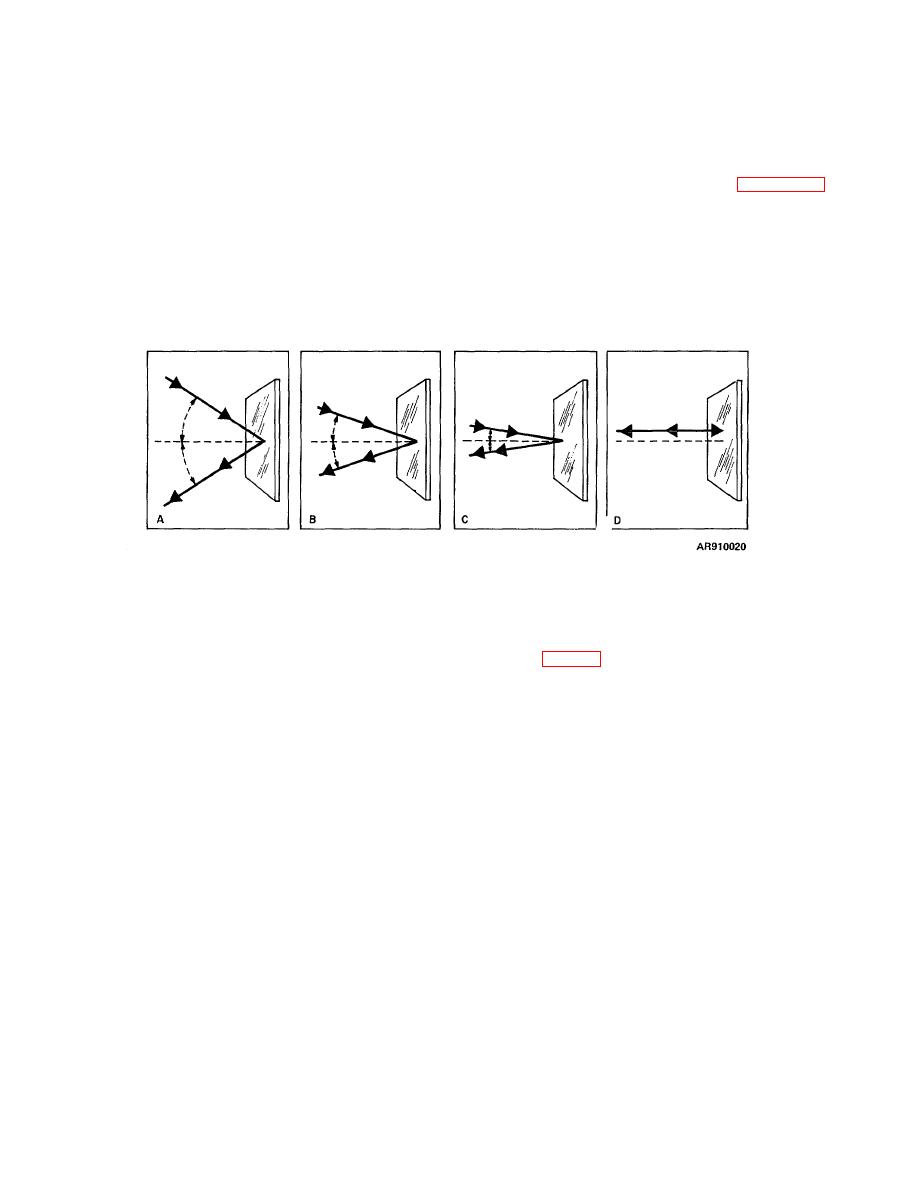 |
|||
|
|
|||
|
Page Title:
Figure 2-14. Reflection from a plane mirror. |
|
||
| ||||||||||
|
|
 TM 9-258
e. The best reflectors are very smooth metal
2-6.
Law of Reflection
surfaces, some of which may reflect as much as 98
a. The law of reflection is as follows: The angle of
percent of perpendicular light. The glass in a silvered
reflection is equal to the angle of incidence and lies on
mirror serves only as a very smooth supporting surface
the opposite side of the normal; the incident ray,
and protective window for the silver coating on the back.
reflected ray, and normal all lie in the same plane.
In front surface aluminized mirrors, the glass serves only
b. Diagrams A, B, C, and D in figure 2-14 show
as a smooth supporting surface for the aluminum
light rays incident upon plane mirrors at successively
reflecting surface. The resulting aluminum oxide (from
smaller angles. By applying the law of reflection, it can
the oxidation of the aluminum when exposed to the
be seen that in all such cases of reflection the angle of
oxygen in the air) is both colorless and transparent and
reflection can be plotted as long as the angle of
so does not interfere to any appreciable extent with the
incidence is known or vice versa.
passage of light. This type of coating is used on the
reflectors in the huge reflecting astronomical telescopes.
Figure 2-14. Reflection from a plane mirror.
b. Regular reflection occurs when light strikes a
2-7.
Types of Reflection.
smooth surface and is reflected in a concentrated
manner (fig 2-15).
and irregular.
2-11
|
|
Privacy Statement - Press Release - Copyright Information. - Contact Us |